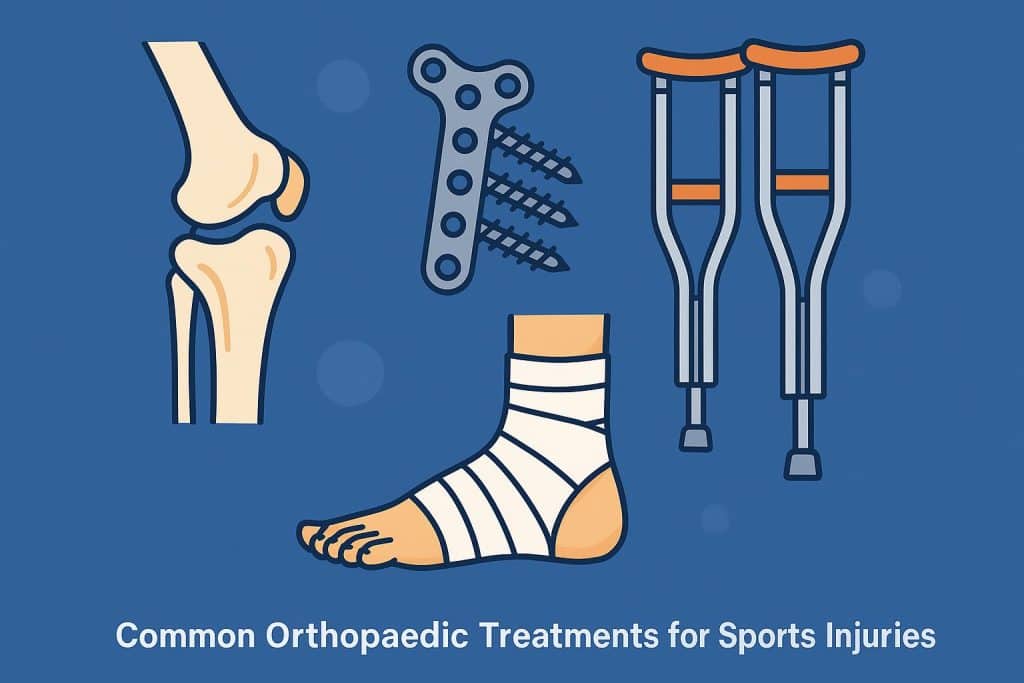Every athlete knows the thrill of competition and the rush of adrenaline when the game is on. But behind every victory, there are also moments of pain, strains, and sometimes injuries that sideline even the most dedicated players. Sports push the body to its limits, and when it breaks down, knowing the right treatment becomes just as important as the training itself.
Whether it is running a marathon, playing weekend tennis, or joining a casual football match with friends, sports injuries can happen to anyone. They can be mild, like a slight sprain, or more serious, requiring medical care and a structured recovery plan. What matters most is not just treating the injury but also regaining strength and returning safely to the game.
This is where professional care plays a vital role. Visiting an orthopaedic clinic in Singapore athletes trust can make all the difference, offering treatments that are designed to heal and prevent future problems. By understanding the most common orthopaedic treatments for sports injuries, people can feel more confident about their recovery journey.
Treating Joint and Ligament Injuries
Joint and ligament injuries are among the most common challenges athletes face. From twisting an ankle on the court to feeling a sharp pull in the knee, these injuries can stop progress in its tracks. Proper diagnosis and targeted treatments are critical to ensure healing happens without long-term complications.
Sprains and Strains
When the body is pushed too hard, ligaments can overstretch or tear, leading to sprains, while muscles and tendons may suffer strains. These may sound simple, but they can cause persistent pain if not treated correctly. Resting, icing, and compressing the area can help in mild cases, but more severe injuries often need structured physiotherapy and medical attention.
Ligament Reconstruction
For sports that place heavy demands on the knees, such as football, basketball, or skiing, ligament injuries can be serious. Tears in the anterior cruciate ligament (ACL), for example, may require surgical reconstruction. Advances in orthopaedic surgery now make it possible for athletes to return to their favorite sports after months of guided rehabilitation, though patience and discipline are key.
Long-Term Stability
Beyond quick fixes, the real goal is stability. Without proper treatment, a seemingly minor sprain or tear may lead to weaknesses that increase the risk of repeated injuries. Rehabilitation programs focus on building balance, strength, and flexibility so that athletes can move freely and confidently again. The aim is not only to heal but to protect the body from further setbacks.
Addressing Muscle and Bone Injuries
Muscle injuries can be incredibly painful, while bone injuries can be life-changing. Both demand thoughtful care, not just to fix what went wrong but to ensure the player returns safely to the activity they love.
Muscle Tears and Recovery
Muscle tears often occur when someone moves suddenly or places unexpected stress on the body. While small tears may heal with rest and guided stretching, larger injuries can require more advanced intervention. Physiotherapy plays an important role, using gradual exercises and targeted strengthening to help muscles regain their natural function.
Fractures and Healing
Fractures are among the most feared injuries for athletes, especially in high-impact sports. A fracture can mean weeks or even months away from training. Treatments vary from casts and braces to surgical fixation with plates or screws, depending on the severity. What matters most is ensuring the bone heals properly to prevent future weakness. Rehabilitation is just as crucial as the treatment itself, with exercises designed to restore movement, rebuild strength, and avoid stiffness.
Holistic Recovery and Prevention
Recovering from sports injuries is never just about fixing what is broken. It is about looking at the bigger picture — how the injury affects the body, performance, and even confidence. A genuine recovery plan combines medical treatment with prevention strategies so athletes can move forward without fear.
The right orthopaedic clinic provides more than surgery or therapy sessions. They guide athletes through every stage of recovery, from initial treatment to building resilience against recurring injuries. Education, training adjustments, and lifestyle changes work together to keep the body strong and prepared for the demands of sport.
Prevention is just as important as treatment. Core strengthening, warm-up routines, flexibility training, and listening to the body are all part of staying healthy. Athletes who take the time to learn proper movement and avoid overworking themselves often enjoy longer, healthier sporting lives.
Recovery is a journey that requires patience, dedication, and trust in the process. With the right care, even serious injuries do not have to mean the end of an athlete’s passion. They are simply a reminder of the resilience the human body has when given the right treatment and guidance. Whether it’s going back to work or enjoying simple activities with friends, orthopaedic care helps make daily life easier and more comfortable.
